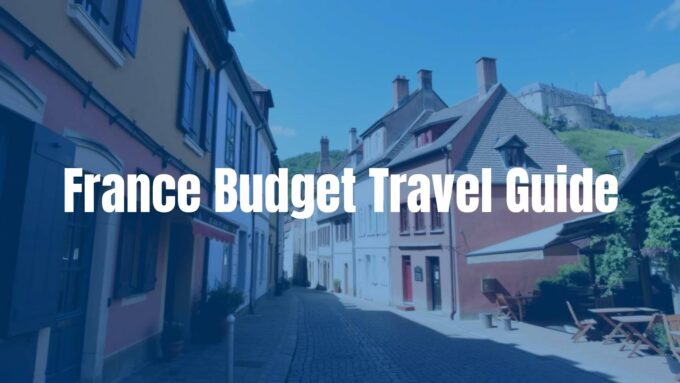How warm is France in summer?
Summer in France usually brings mild to hot days. Average highs sit around 65°F-80°F (18-28°C) across much of the country, including Paris, Limoges, and Bordeaux. Heat waves do happen, and places like Bordeaux have reached 108°F (42°C) in recent years.
Temperatures vary by area. Paris can be warm with cooler evenings, while Provence and the French Riviera are hotter and great for beach time. Nights by rivers or the coast can feel cool, so pack a light layer. Plan for warm days but be ready for changes.
Should you expect rain or heat waves?
Both are possible. Cities can feel hot during heat waves, and air conditioning is not common in older buildings. Check with your hotel or rental about AC before you book so you’re not stuck in a hot room at night.
Short summer showers also pop up, even when the forecast looks dry, especially around Paris. Pack a small umbrella and a light water-resistant layer so a sudden shower doesn’t slow you down.
- For heat: breathable clothes, refillable water bottle, hand fan
- For rain: compact umbrella, light rain jacket, quick-dry shoes
What regional differences affect your packing list?
What you wear depends on where you go and what you do. Cities like Paris lean a bit dressier. Southern beach areas are casual and hot. Coastal spots can be windy and cooler at night. Hillside towns have cobblestones, so good shoe grip helps.
| Region | Weather feel | What to pack |
|---|---|---|
| Paris & major cities | Warm days, cooler evenings | Polished basics, comfy walking shoes, light layer |
| Provence & French Riviera | Hot, sunny | Breathable fabrics, swimsuits, sun hat, sunscreen |
| Normandy/Brittany coast | Mild, breezy, possible showers | Light sweater/jacket, scarf, water-resistant layer |
| Wine regions & hill towns | Warm, uneven streets | Shoes with grip, airy outfits, sun protection |

Choosing the right luggage for summer travel in France
What size and type of bag is best for French cities and countryside?
Go compact. Big rolling suitcases struggle with narrow sidewalks, stairs, and cobblestones. A carry-on size travel backpack that opens like a suitcase is usually the easiest to carry on trains and through old streets.
For day-to-day use, bring a comfy daypack or secure shoulder/crossbody bag. It should hold water, sunglasses, a small umbrella, and a few extras without weighing you down. A foldable tote is handy for markets and shops.
How to pack efficiently for trains, metros, and cobblestones
Keep your load small so it’s easier to lift onto trains, up stairs, and over uneven streets. A carry-on helps reduce lost bag worries and pushes you to pack only what you need. Packing cubes keep outfits sorted and save space.
- Shoes: bring 2-3 pairs that work for walking and evenings
- Clothes: pick neutral pieces you can mix and match
- Layers: add one light sweater or jacket for evenings
- Toiletries: travel sizes or buy in France
Packing tips for a smooth summer trip across France
How to pack light and avoid overpacking
Pack less than you think. Build a small set of neutral basics (white, black, beige, navy) that work together. Choose breathable fabrics like linen and cotton. These can go from daytime sights to dinner with a swap of shoes or accessories.
- Limit to 2-3 pairs of shoes
- Plan to re-wear bottoms and outer layers
- Use packing cubes to save space
- Buy some toiletries at a French pharmacy
Laundry tips and outfit repetition
Repeat outfits and plan a laundry stop. Many rentals have machines, and laundromats (laveries automatiques) are easy to find. Bring a small packet of detergent or detergent strips for quick sink washes.
- Choose pieces that work for day and night
- Carry a small wrinkle spray for linen and silk
- Quick-dry fabrics help between washes
Security advice: Keep your belongings safe
Tourist areas can attract pickpockets, especially on metros, at busy sights, and in markets. Pick bags that zip and sit close to your body. Crossbody bags and “sac banane” styles worn across the chest are smart picks.
- Keep passport, cash, and cards in inner pockets or a money belt under clothes
- At cafes, keep your bag on your lap or between your feet
- Carry one card and ID; leave backups in the hotel safe
What to wear in France in summer: Clothing recommendations
Dresses, skirts, and light summer outfits
Dresses and skirts are cool and simple for warm days. Linen in neutral shades works well and can be casual with sneakers or a bit dressier with espadrilles. Brands like Dissh, Reformation, Madewell, and J.Crew have good options, with midi and maxi lengths very popular.
Wrap and A-line cotton dresses and soft floral prints fit right in. Midi skirts pair nicely with simple tops. A breezy white dress is an easy go-to. Keep shapes clean and comfortable.

Tops and blouses suited for warm days and cool evenings
Choose breathable tops you can wear in different ways. Plain white and black tees are staples. Washable silk tanks feel nice and layer well under a jacket at night.
A classic cotton button-up (white, striped, or light blue) adds style and sun cover, worn open or tied at the waist. Light sleeveless knits are another neat option. Aim for simple pieces that work together.
Bottoms: Pants, shorts, and versatile layers
Loose linen trousers are great for heat and easy to dress up or down. High-waisted wide-leg pants are popular and comfy. For shorts, pick linen or tailored styles instead of sporty or very short cuts. Sézane has nice options that match local trends.
Choose items you can mix and stack with other pieces so you don’t bring too much.
Lightweight sweaters and jackets for Paris evenings
Nights can feel cool, even in summer. Pack one light sweater or jacket. A classic trench works for wind and light rain (a hood helps). A denim jacket pairs with dresses, skirts, and pants.
A thin knit you can drape over your shoulders is handy for outdoor dinners or boat rides. Striped knits from brands like La Ligne are stylish and warm enough without bulk.
Swimwear for beaches and pools
Heading to the Riviera, Provence, or Normandy? Pack 1-2 swimsuits and a light cover-up. You’ll see a range of styles in France, including cheekier cuts. Go with what feels good to you.
Options range from Hunza G, Left on Friday, and Monday Swimwear to budget picks at Old Navy and Abercrombie. Add a roomy tote for sunscreen, a book, and water.
What not to wear: Avoiding tourist fashion mistakes
Activewear is for workouts, not sightseeing. Skip gym leggings and running shoes for city days. Keep colors simple and avoid loud logos. Very short shorts don’t read as chic; pick linen or tailored styles instead.
Baseball caps are fine if plain. Avoid neck money pouches and bulky fanny packs-crossbody “sac banane” styles are safer and blend in better.
Footwear for France in summer: Comfort and style
Best walking shoes for cobblestone streets
Cobblestones are everywhere, so wear broken-in shoes with support and grip. Stylish white sneakers are a solid choice and work with dresses and linen pants.
Common Projects, Veja, and Madewell make popular pairs. Look for traction to avoid slips. Add moleskin where shoes rub, and leave a bit of room if your feet swell during long walks.
Sandals and flats for daytime activities
Comfortable flat sandals and ballet flats are great in warm weather. Neutral or metallic sandals mix with many outfits. Birkenstock Arizona sandals were seen all over France last summer.
Ballet flats instantly smarten up a look. Break them in before your trip and pick cushioned styles. Rotate shoes to keep feet happy.
Should you pack heels or dress shoes?
High heels and cobblestones don’t mix. If you want height, wedge espadrilles give lift and stability and suit summer outfits. They’re common in France.
Men can bring loafers or dressy casual shoes for dinners. The general vibe is “casual but polished,” so skip ultra-formal shoes unless you have a fancy event. If you bring heels, choose block heels or wedges.

Must-have accessories for a French summer trip
Hats, sunglasses, and sun protection
The sun can be strong. A straw hat helps with shade and style. Boater styles (Lack of Color, Brixton) work for day trips, and packable hats (Janessa Leone) travel well. A hat clip keeps it safe on the go.
Good sunglasses protect your eyes and finish an outfit. Classic shapes (Ray-Ban, cat-eye, Celine) are common. Bring sunscreen or buy a French brand when you arrive.
Light scarves and layering pieces
A large, lightweight scarf is useful and stylish. Wear it at the neck, tie it on a bag, use it as a light cover in rain, warm your shoulders at night, or even spread it out for a quick picnic.
Other light layers like a denim jacket or thin cardigan help you adjust to changing temperatures without adding weight to your bag.
Day bags, totes, and secure purses
Pick a day bag that zips. A zippered tote holds a camera, water, umbrella, and small buys, and a zipper adds a bit of security. A straw tote with adjustable straps looks summery and keeps hands free.
At night, carry a small crossbody with a secure clasp for your phone and wallet. Basket bags are cute but often don’t zip, so save them for quieter days. Many locals carry a main bag plus a canvas tote for groceries or markets (you’ll often pay for bags at shops).
Toiletries and personal care for summer in France
Travel-sized sunscreen and skin care essentials
Bring travel-size sunscreen-sun in the south can be intense. You can also buy great sunscreens at French pharmacies and save space in your liquids bag.
Stick to a simple skincare routine: cleanser, moisturizer, lip balm. Pack small versions of any must-have items in leak-proof containers. Keep liquids in a quart-size, sealable bag for airport checks.
Bug spray, deodorant, and hair care
Mosquitoes can be active on warm nights and in rural spots. Pack a small bug spray. Solid deodorant saves liquid space.
Humidity can cause frizz, so bring products that work for your hair. A compact brush and a few hair ties or pins help. Many hotels have basic shampoo and soap, but bring your own if you’re picky or have sensitive skin. Solid or powder makeup and perfume sticks reduce liquids.
How to pack liquids for international travel
Follow the TSA 3-1-1 rule: each liquid must be 3.4 oz (100 ml) or less, all must fit in one quart-size clear bag, and you get one bag per person.
- Use leak-proof travel bottles
- Swap to solid shampoo/conditioner where you can
- Pack only what you truly need; buy basics in France if needed
Travel documents, money, and health items
Passport, visa, and proof of travel insurance
Check your passport: it should be valid for at least six months after you plan to leave the Schengen Area and have two blank pages. Confirm visa rules for your nationality ahead of time.
Carry travel insurance details (digital and paper), including emergency contacts. Keep copies of your passport and key documents separate from the originals, plus a couple of extra passport photos.
Credit cards, euros, and money safety tips
Cards are widely accepted, and contactless pay is common, especially in Paris. Still, carry some euros for small buys or places that prefer cash. Tell your bank your travel dates. Bring two cards and store them separately.
- Carry one card and ID when out; leave backups in the hotel safe
- Use ATMs with care and stay aware of your surroundings
- A small coin purse helps with euro coins
Prescription medications and basic first aid
Bring enough prescription meds for your whole trip plus a few extra days. Keep them in original packaging with labels and carry a copy of your prescription if you can. Keep meds in your carry-on.
A small first aid kit saves time: band-aids, antiseptic wipes, pain relievers, allergy meds, and motion sickness tablets are good to have.
Electronics and tech to pack for France
Adapters and converters: French plug types
France uses Type C and Type E plugs, 230V, 50Hz. Travelers from the US and other regions will need a universal adapter.
Know the difference: an adapter changes plug shape; a converter changes voltage. Most phones, laptops, and camera chargers are dual-voltage and only need an adapter. High-heat tools (hair dryers, curlers, straighteners) may need a converter unless they’re dual-voltage. Check the label for “100-240V, 50/60Hz.” If not dual-voltage, bring a converter or plan to buy/borrow one in France.
Phones, chargers, and portable power banks
Your phone will do a lot: photos, maps, translation, tickets, and messages. Pack chargers for all devices. A compact multi-port charger is handy.
Carry a power bank (10,000mAh or more) for long days. Load key apps before you go: offline maps, translation, transit, and booking apps.
What to leave out: Items you don’t need in France in summer
Skip heavy hair tools and lots of makeup unless you have a special event. They take space and may need a converter. Keep your beauty kit simple.
Don’t bring an outfit for every single day. Choose pieces you can re-wear in different ways. Leave bright, logo-heavy clothes and gym outfits at home if you’re not actually exercising. Also avoid large, bulky travel backpacks in crowded cities-they’re awkward on transit and easy to access from behind.













Leave a comment